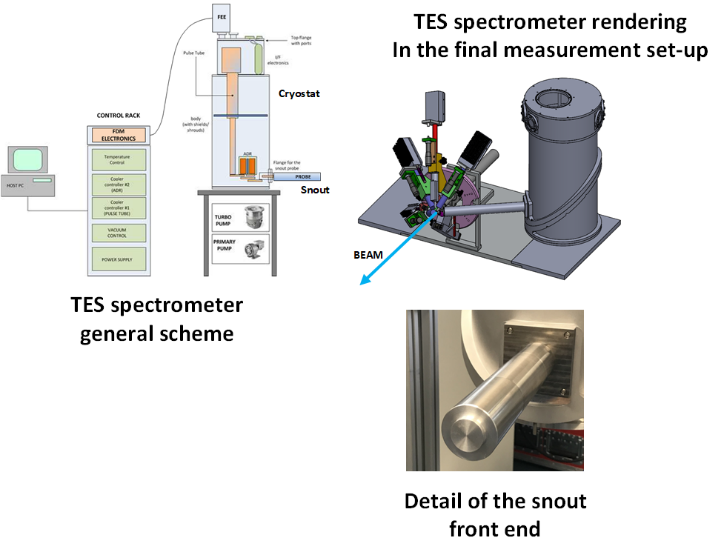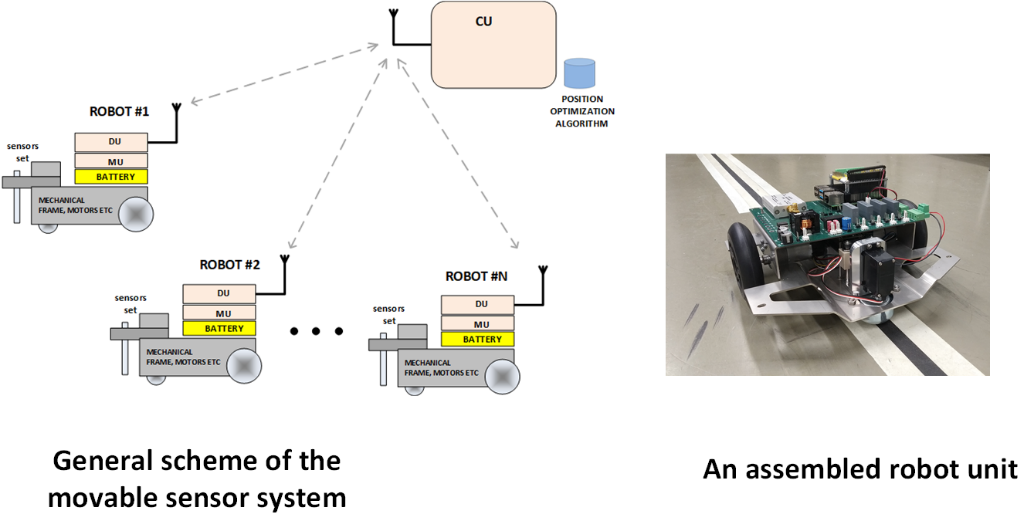Technology Innovation and Exploitation for Society is included in the AHEAD2020 project with the aim to explore the transfer of technologies developed in AHEAD2020 toward other applications relevant to the high-tech industrial market, both in the space domain and for “ground” applications, which could be relevant for the general public and the society as a whole.
In this frame, we are pursuing three tasks:
- Design and realization of a X-ray spectrometer with very high energy resolution based on the Transition Edge Sensors (TES) technology, to be used for Cultural Heritage and Environmental Science studies in a dedicated laboratory (LABEC) in Florence.
- Upgrade of an existent X-ray spectrometer facility in Lisbon with a novel Metallic Magnetic Calorimeter (MMC) detector to improve its energy resolution performances and flexibility of use for fundamental research and applied studies in material sciences, natural resources, climate balance, environmental sciences in general and cultural heritage.
- Design and development of a movable sensor acquisition system composed by a set of movable sensor platforms (called robots) which are dispatched to optimized measuring positions, within the Virgo gravitational wave observatory near Pisa, under control by a Central Unit (CU) running an optimization algorithm to maximize the data usefulness for Newtonian Noise cancellation.
For the task a) (TES spectrometer) the use scenario is the Particle Induced X-ray Emission (PIXE), where a particle beam (typically protons accelerated to a few MeV) is bombarding the sample surface and the resulting X-ray emission is analysed to determine the sample chemical content in elements having an atomic number equal or higher than 11 (Na). This technique allows the sample to be in air, opening the investigations to delicate specimens that would not sustain the high vacuum exposure required by other analytical techniques.
The new X-ray spectrometers thanks to the use of TES detectors will have an energy resolution one order of magnitude better w.r.t. what is available today, roughly 15 eV against 150 eV @ 6 keV, adding new analytical capabilities to the LABEC facility and opening new investigation fields.
As the TES detectors require deep cryogenic temperature to operate (typ. 0.1 K) the detector must be hosted into a purposely designed cryostat composed by a vacuum vessel and a cryogenic cooling chain. To allow placing the detector as close as possible to the sample it will be mounted at the front of a long “snout” protruding from the main vessel: the design of such snout with the capability to provide enough cooling power to the detector while at the same time isolating it from the ambient is one of the challenges of this project.
The readout of the detector, composed of an array of 32 pixels, will be through an electronic chain based on the Frequency Division Multiplexing (FDM) technique to convey all signals through a single SQUID amplifier.
For the task b) (MMC spectrometer) the use scenario includes PIXE within a reconfigurable set-up also including PIXE-induced XRF (where PIXE is used on selected targets to generate specific X-ray lines used to illuminate the specimen under investigation to produce X-Ray Fluorescence) and allowing easy switching between in-vacuum and in-air measurement depending on the nature of the sample.
The MMC detector, operated at a temperature slightly below 0.1 K, is a promising emerging technology that should allow energy resolution well below 10 eV @ 6 keV and better intrinsic linearity w.r.t. TES.
Within WP15 it is foreseen to conduct a measuring campaign on similar samples in Florence and in Lisbon so to compare the results obtainable from the different (TES or MMC) detector technologies.
About the task c) (movable sensors) the novelty here resides in the integration between the position optimization algorithm running in the central unit and the autonomous position reconfiguration of the movable sensor platform, without human intervention, following the evolution of the environmental parameters.
The Central Unit (CU) issues commands wirelessly to all the mobile units to move to new locations. Data from observation periods are analyzed in real time to determine a reconfiguration of the array to optimally fulfill a certain observation task.
Machine learning processes implemented in the mobile robots network control system are envisaged in future implementations to further contribute to the optimization of the array operation.
After the completion of the WP15 tasks we envisage that, following proper agreements with all involved parties, the TES spectrometer could become a permanent facility in the LABEC laboratory for a few more years to contribute to the studies in cultural heritage and environmental sciences. A similar future is also foreseen for the MMC spectrometer in Lisbon and we see both spectrometer as pathfinders for the development of a user-friendly, lab-grade X-ray High Resolution Energy Dispersive Spectrometer.
The envisaged future for the movable sensor platform is mainly in support to the Virgo GW observatory and possibly the future underground Einstein Telescope to provide environmental noise data and possibly locate disturbances. Other possible spin-off applications in the field of geological prospection in remote location (or even on the moon) are under investigation.





